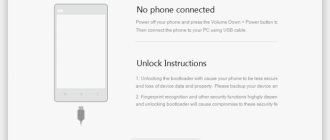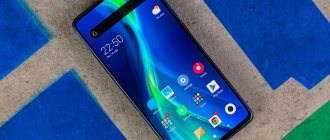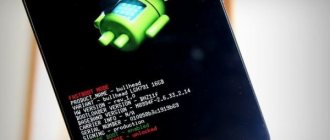I have read many articles about this problem, but I can't solve it. I decided to install the developer app on my phone using Wi-Fi. To do this I need to do something with my phone. The first step is to unlock the bootloader. I'm on step 8, fastboot oem get_identifier_token shows info. adb sees my device, but fastboot can't. Idea?
My phone is HTC Wildfire S and these are the steps:
- I restarted the phone and entered FASTBOOT USB
- I tried running the fastboot oem get_identifier_token command but without success.
I'm using Windows 7 Professional and my phone is recognized as HT1CSTR05155.
Fastboot mode - what is it?
Fastboot is a tool included in the System Development Kit, an operating system development environment. Its purpose is to change the internal memory to remove information garbage. Among other well-known modes, fastboot most closely resembles recovery.
But Fastboot is also used to flash the Android OS if updating the device using the built-in function is not possible. Fastboot is not built into Android, but is located in the device's memory, which allows you to use it if the operating system is damaged. This is the main advantage of Fastboot over similar device states, since the effect is performed at the hardware level.
How to remove fastboot
Most users do not need Fastboot. To remove it, you need to:
- Go to device settings.
- Open System, then Accessibility.
- Uncheck the box next to fast boot. How to exit fastboot
If the user accidentally switched to Fastboot and cannot exit it, it’s not a problem. By following the short instructions, you can leave this mode: - Press the power key for half a minute. The device should turn off and show no signs. After 30 seconds, the smartphone should turn on independently outside of fastboot mode.
- If the previous methods did not work, connect the device to the computer using a cable. Download the driver so that your PC can recognize your smartphone or tablet. Open a console on your computer and enter fastboot reboot/code>. The Android device should force reboot.
The second option involves removing the battery for 20 seconds if it is removable. After the time has passed, insert the battery and turn on the phone by holding the Power key for half a minute.
After exiting Fastboot, you need to open your phone settings and disable this mode. Fast loading is located in special features, which is described in more detail above.
If you have any questions, please let us know Ask a Question
Fastboot devices
Users often encounter problems when obtaining Root. In difficult cases, adb commands are used for this using the computer command line. However, the majority simply enter them without knowing the purpose.
The Fastboot devices command is used when getting root if the device is in bootloader mode. Entering this command allows you to obtain certain information about your phone or tablet. Fastboot devices allows you to understand whether the device is capable of receiving a signal from Fastboot and executing specified commands. This is a powerful tool that is often blocked for the average user.
In addition, the command displays the serial number of the device, the presence of the necessary drivers on the computer, and some confidential information about the device.
How to install ADB + Fastboot on a computer
ADB, or Android Debug Bridge, is a console application for PC that allows you to manage your Android device directly from your computer. It looks like this: first, the ADB toolkit and drivers for Android are installed on the computer, then the mobile device is connected to the PC via a USB cable in debugging mode, and finally, after launching ADB, special commands are executed in the console (command line) to initiate certain actions with a gadget. Detailed information about the principle of operation of the debugging tool itself is presented on the official website of the developer, so we will not dwell on this, but will immediately move on to the capabilities of ADB and how to install it on a computer.
How to disable Fastboot
On most devices, to disable this function, just go to the settings and find the item responsible for fast loading. To turn off the latter, just uncheck the box and restart your smartphone.
How to install twrp via Fastboot
Let's consider the simplest installation option. Requires a computer and the Fastboot console application. It is not necessary to have root on the phone, but you must have access to the bootloader. Installing TWRP:
- Install ADB and Fastboot applications on your computer. Connect your smartphone to your PC using a cable and enable USB debugging on the device. It is located in the settings, section for developers.
- Launch a command prompt on your computer and enter cd [adb program folder location] without square brackets. To specify the path, you need to go to the appropriate folder and copy the value of the line from above.
- Enter adb devices and check the visibility of the smartphone. If it is displayed, proceed to the next step.
- Download the TWRP image for a specific device from the official website of the application.
- Open the download links and select primary.
- Save the image to the folder for adb and Fastboot.
- Open a command prompt and enter the adb reboot bootloader command. The device will reboot into fastboot.
- Enter the command Fastboot flash recovery [TWRP image name] without square brackets.
- Wait for the process to complete and reboot your smartphone by entering fastboot reboot.
Now, when you turn on the device, you can go to TWRP using the combination to enter the factory menu.
How to install firmware via fastboot xiaomi
Sometimes the user needs to install new firmware, but it is impossible to get the update through the built-in system. In such a situation, use Fastboot. With its help you can install any version of the OS.
Before using this method, make sure that your smartphone allows the installation of third-party firmware. Download the desired version of Android and charge your device. For Xiaomi smartphones you will also need the MiFlash program, which is installed on your computer.
Flashing the phone via Fastboot
Install MiFlash:
- Unpack the archive with the program into a folder whose path contains only Latin letters and numbers.
- Unpack the archive with the firmware into the same folder.
- Launch the application.
Before starting the firmware, click Select in the program and select the path to the OS you want to install. Click on refresh and check the status of the id and device fields. If they are filled, then you can begin installation.
Smartphone firmware:
- Make sure that the box next to save user data is checked at the bottom of the program. This will save all the information stored on the phone. If you need to clear the internal memory, check the clean all box.
- Switch your smartphone to Fastboot by holding down the volume down key when turning it on.
- Connect your device to your computer using a cable.
- Click on Flash in the program and wait for the firmware installation to finish.
You can track the installation progress as you fill out the progress field. When the word success appears next to the word result, disconnect the phone from the PC. Check the functionality of the firmware. Remember that the first boot takes a long time because the system needs to be configured.
What does Fastboot mean?
Fastboot literally translates as fast boot and usually refers to the corresponding function of a smartphone or tablet. When turned off, the device will not show the Android and manufacturer logo when turned on, but will allow the user to use the system as quickly as possible.
The word Fastboot also refers to the factory menu if it is launched with the fast boot option enabled. With its help, the user can perform some commands that are not available to regular recovery, for example, reinstalling the firmware.
And there is also a Fastboot utility for smartphones. It is installed on a computer to work with the device using the command line. This allows you to bypass system restrictions and install unofficial firmware or custom recovery on your smartphone.
Installing ADB and Fastboot from the Android SDK
This method involves using the official Android Studio application development and testing tool. Go to the page https://developer.android.com/studio/index.html and find the heading “Get just the command line tools”. Below we download the SDK tools archive for Windows (before downloading, we agree to the terms of use).
Unpack the archive to drive C. In our case, the files were extracted to the sdk-tools-windows-3859397 .
We go into the directory, and then go to the tools/bin directory. Here we are interested in the sdkmanager , which will help install ADB and Fastboot on your computer.
Further all actions will be performed in the Windows command line. We run it as administrator.
Now you need to open the folder with sdkmanager, for which in the console you should run the command cd C:\sdk-tools-windows-3859397\tools\bin, where C:\sdk-tools-windows-3859397\tools\bin is the path to the sdkmanager file .
If you unpacked the Android SDK not to drive C, but to some other location, then the full address can be found using the top line of Explorer (right-click on the destination folder and click “Copy address”).
So we went to tools\bin and now we need to run the sdkmanager “platform-tools” command, which will install the Platform-tools package containing the ADB and Fastboot files.
During installation, review the license agreement and press Y to complete the operation.
If everything went as it should, a platform-tools with the necessary adb.exe and fastboot.exe .
What commands are there in Fastboot?
While in Fastboot mode, the smartphone and tablet are able to perceive several commands that come from the connected computer. The command line must be running on the remote device, and the Android device must be in bootloader mode.
Fastboot devices provides the user with various information about the device, including the serial number. This program is blocked by some manufacturers due to the amount of data provided.
Fastboot OEM unlock is used to unlock the bootloader. It can be blocked by the manufacturer, and such protection can be removed by appropriate utilities. For example, HTC and Asus block the bootloader, and only applications released by the same companies can unlock it.
Removing the lock allows you to fully unlock the potential of ClockworkMod, TWRP and similar programs used to change firmware. But Fastboot can also remove protection. Boot your device into this mode, connect it to your computer and enter the command in the command line. Follow the instructions that appear on the screen of your smartphone or tablet. Please note that using this command will factory reset your device.
Fastboot does not see the device
I have read many articles about this problem, but I can't solve it. I decided to install the developer app on my phone using Wi-Fi. To do this I need to do something with my phone. The first step is to unlock the bootloader. I fastboot oem get_identifier_token in step 8, fastboot oem get_identifier_token shows the information. adb sees my device, but fastboot can't. Idea?
My phone is HTC Wildfire S and I follow these steps:
- I restarted the phone and entered FASTBOOT USB mode
- I tried to run the fastboot oem get_identifier_token command but without success.
I'm using Windows 7 Professional and my phone is recognized as HT1CSTR05155.
Answers
Run fastboot as root or using sudo.
Are you rebooting the device into bootloader and entering fastboot USB in the bootloader menu?
adb reboot bootloader
Then find the on-screen instructions to enter Fastboot mode.
Problem solved. At the end I saw that the Android drivers were not installed. I installed the drivers from this site https://forum.xda-developers.com/showthread.php?t=2126036, and the fastboot device using fastboot. One thing I don't understand is why adb saw the device but fastboot didn't.
ADB and fastboot require different USB drivers.
Although you can see your device under adb when your phone is on, fastboot will not detect it until you install a driver for it and hence show "pending device".
You can follow the following steps to do this:
- Open Device Manager and reboot your device to boot quickly by pressing the Increase, Decrease and Power buttons at the same time.
- You will notice that Device Manager is updated and your phone now has a yellow icon
- Download the Google USB Driver, it's a zip file so extract it to your local directory.
- Right click on the yellow triangle for your device and update the driver, select the option to update from local storage and select the “usb_driver” folder from the extracted files section in the previous step.
- You are ready to go now, fastboot oem unlock will detect the device now
I didn't realize it right away, but there are different ADB drivers and Fastboot drivers. I installed google usb drivers with additional SDK components and ADB worked fine, but I got "pending device" when trying to flash in fastboot mode.
I went into Device Manager from Control Panel and saw an "Android 1.0" device with a yellow icon indicating it was not working properly. I had to update the driver and select from a list of existing drivers that had a fastboot entry.
I had the same problem described by "pepuch" on my HTC Desire S. I tried different drivers on relatively new computers running Windows 8 and Windows 10. I eventually found a link telling me to try the same procedure on an old one ( desktop) computer I did and the computer was able to detect my Desire S in fastboot USB mode and I was able to read the ID token. The link that led me to the solution is the following: https://forums.androidcentral.com/htc-one-rooting-roms-hacks/345350-htc-one-pc-doesn-t-recognize-bootloader.html
The only thing I did before running in fastboot USB was to install the HTC drivers for the phone on Windows 7 and make sure the phone was detected when Android was up and running.
Problem: adb and fastboot modes for one Android device are recognized as separate Windows devices
Scenario: device is visible with adb devices but not found on fastboot devices with fastboot devices and other suggestions do not work here; you still encounter "waiting for device" in Windows and cannot select driver to install using rahul pandey's answer using Google USB driver.
Possible solution: Manually update the driver for your device in Device Manager while it is connected in Fastboot mode
- Download and install Android USB drivers for your device. For example, Samsung drivers for Samsung phones or the (venerable) Google Galaxy Nexus
- Reboot your device in fastboot mode using adb reboot bootloader or by simultaneously pressing Volume Up + Volume Down + Power buttons
- Open Device Manager
- Disconnect/connect your Android device so you can easily find your unrecognized device in the list.
- Under Other Devices, find your Android phone with a yellow triangle.
- Right-click on it and select: Update driver > Browse my computer for driver software > Let me pick from a list of available drivers on my computer
- Find the driver you just installed and select it. For my Google Galaxy Nexus it was Samsung Android ADB Interface.
With any luck, this will solve your problem. You can now use the bootloader unlock method for your device (or in my case, flash the OEM ROM).
The computer does not see the phone in Fastboot mode
A similar phenomenon can be associated with both the phone and the computer. Let's consider two options for solving the problem.
The problem is with the phone:
- Reboot your device.
- Connect your phone to your PC using a cable.
- Open quick settings and make sure the debug or drive feature is running.
- Go to the full settings menu, open wireless networks.
- Switch the current status of the access point.
- Check if the USB debugging checkbox is checked in the developer section.
- View connected devices. If your computer recognizes your phone, you do not need to complete the following steps.
- If the PC still does not see the smartphone, disconnect it from the PC and reboot.
- Try clearing your cache. Check the display of your smartphone on your PC. If that doesn't help, uninstall the most recently installed applications. Especially if they are used to backup data.
- Use an antivirus.
The presented procedure should help solve the problem if the latter is associated with an Android device. And you can also perform a factory reset, but resort to this step if you are sure that the problem is with the phone.
The problem is related to the computer:
- Turn off the PC, unplug it and hold down the power button for half a minute. This will help remove static charge that may interfere with detection of the connected device.
- Boot the operating system, go to device manager and open the list of portable devices. If you have a phone but it is turned off, right-click on it and turn it on.
- Check the connection quality of the USB ports by looking under the cover of the system unit. Make sure a specific port is working by connecting another device.
- If the above processes do not help, go to Device Manager again. Review the list and note the location of unknown devices, if any. They are marked with a yellow triangle. Remove the smartphone from the connector and look at the list. If one of the devices is missing, then it was the phone. To solve the problem, download the driver for the device from the manufacturer’s official website and install it.
- Inspect the USB controllers and make sure they are not damaged: there should be no specific signs near each port.
- Scan your computer with an antivirus and then disable it and other security programs.
- Remove the latest software installed on your computer.
- Check device manager for all peripherals connected to your PC. If the computer does not recognize them, contact a service center to identify and fix the problem.
The presented solutions to the problem help get rid of the most common causes.
«>
Still can't connect to ADB?
If you still can't connect to ADB, your device may have a more serious problem at the firmware or hardware level. Major hardware problems include the following:
- Damaged USB port on your computer or smartphone
- Faulty firmware on your smartphone is usually caused by a custom ROM
- Damaged or faulty charging cable
For example, I once had a Nexus tablet that would periodically disconnect from my computer. Even after replacing the micro-USB port, the tablet continued to malfunction. The reason for the shutdown turned out to be a buggy custom ROM. While custom ROMs are great for restoring old hardware, they add another layer of complexity that often causes problems.
There are many potential reasons for a device that refuses to connect via ADB. Try different cables and ports on your computer to resolve the issue.











